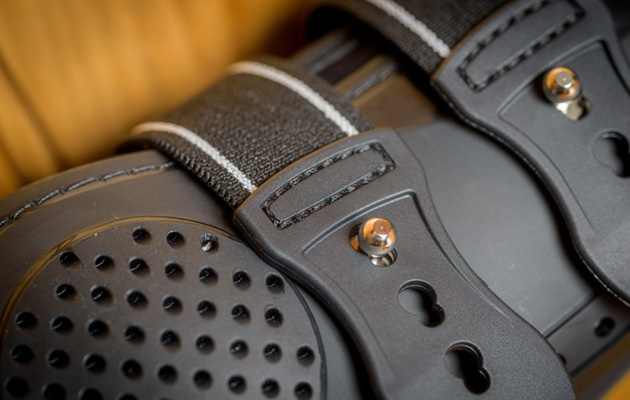More articles on protective boots and shoeing your horse
Find a farrier
Q: Which boots may be best for my barefoot Anglo Arab? She currently wears front Boa boots, but develops ridges under the dial area.
She’s trimmed every six weeks and I do a fair amount of roadwork and stony tracks.
SM, Flintshire
According to Lucy Nicholas of Trelawne Equine, distributors of natural hoofcare products, the hoof boot must closely fit the foot’s size and shape.
“Each style of boot suits a slightly different foot shape, governed by hoof measurements,” she said. “It is important to measure each hoof — information for measuring barefoot horses can be found at www.trelawneequine.co.uk.
“Measuring needs to be done after a fresh trim, ideally in millimetres. All hoof boots have a growth tolerance built in, so the boots need to be fitted at their minimum growth, or the boot will be too big.
“A close-fitting boot will ensure the most natural break over [how quickly the horse completes a step] and will help prevent tripping.
“If the horse grows out of the boots between trimming, you could do more roadwork without boots, to keep the extra hoof growth in check. If this is not possible, I would advise trimming every three to four weeks.
“With regard to boot brands, the Old Mac G2 generally works well with a round foot. For a foot that is longer than it is wide, the G2 is useful for hooves up to 10mm longer than their width.
“The longer-than-wide hoof is often suited to the Easyboot range, which includes the new Glove — a revolutionary, lightweight boot with no hardware,” she said.
The Association for Advancement of Natural Horse Care Practices (AANHCP), which uses the natural trim method pioneered by Jaime Jackson, did extensive boot trials, according
to Somerset-based barefoot trimmer Caroline Andresen.
“The Swiss Horse Boot tested the best overall, though needs to be fitted by a trained fitter,” she said. “I have a few personal favourites, like the Easyboot Glove. However, this boot will only fit certain types of feet and won’t suit horses with long toes or natural hoof flares.
“In your case, I would not be happy with boots causing ridging and would look at changing them.”
Caroline’s booting rules:
• Measure the foot’s weight-bearing length and width at the widest point.
• If a reputable trimmer is not fitting the boot, contact a knowledgeable supplier, such as www.thesaddleryshop.co.uk
• If you are using the boots every time you ride, your horse’s feet will not wear naturally, or fit the boot. You can either get your horse trimmed more often, or try to minimise the boots’ usage.
• If your horse needs boots constantly, there is something wrong — and it’s usually with nutrition. If you use a trained natural barefoot trimmer, you should be given all the nutritional information and help you need to assure sound, strong feet.
Information
Trelawne Equine, tel: 08442 568585 www.trelawneequine.co.uk
Caroline Andresen AANHCP, tel: 07758 528228
www.ukhooftrimmers.co.uk
www.swiss-horse-boot.de
This article was first published in Horse & Hound (24 December, ’09)
Looking for more articles on protective boots and shoeing your horse?
Find a farrier near you




